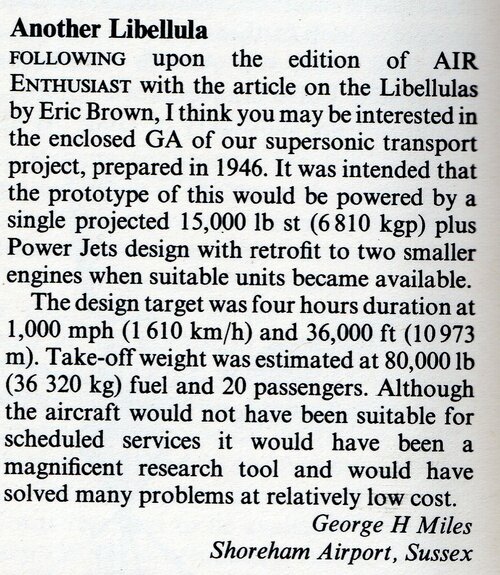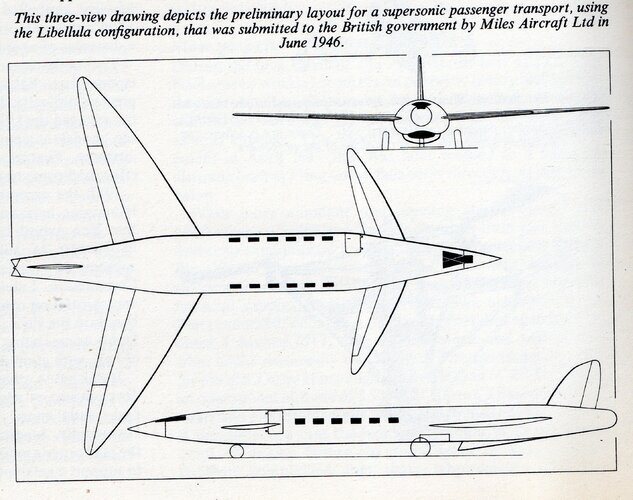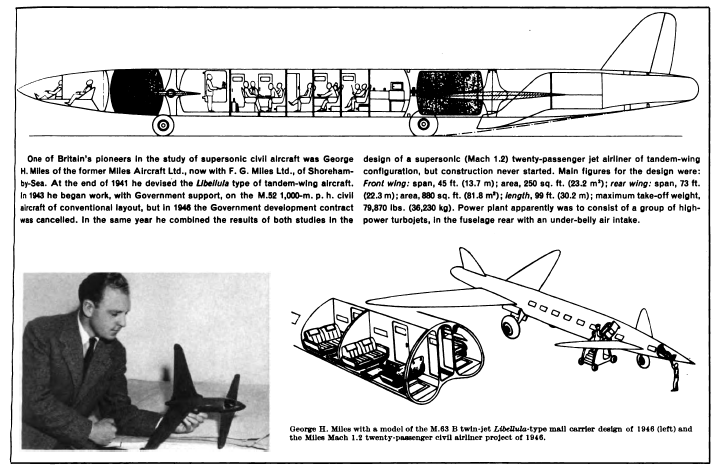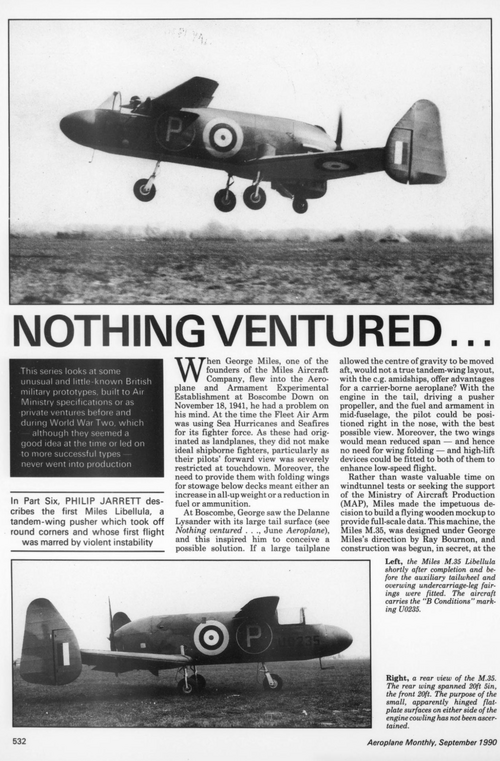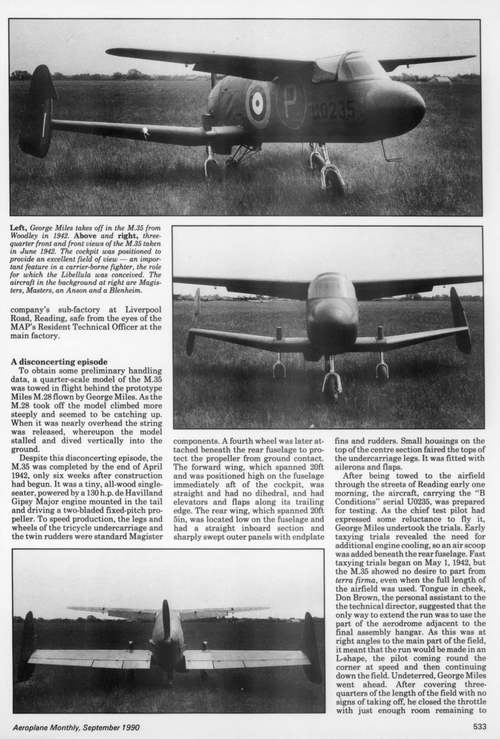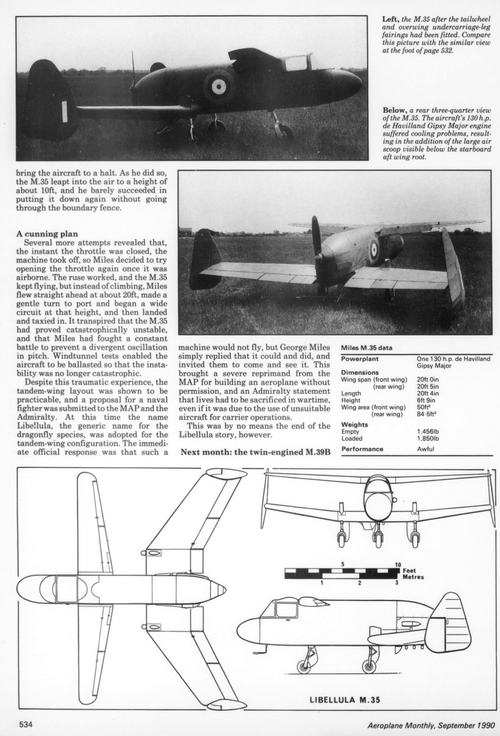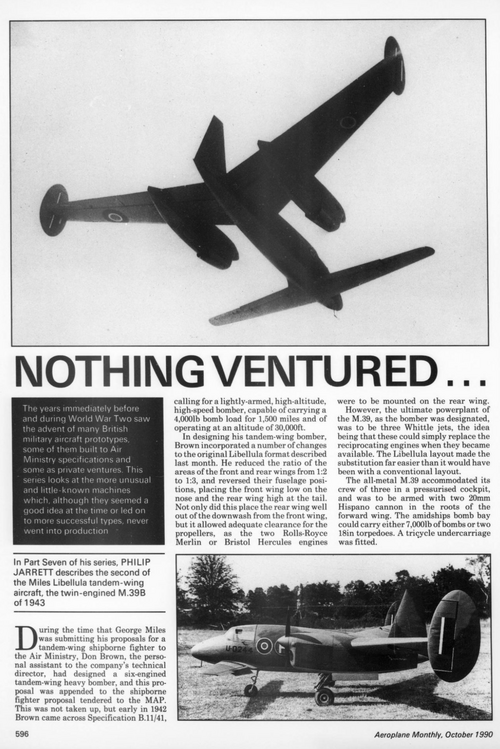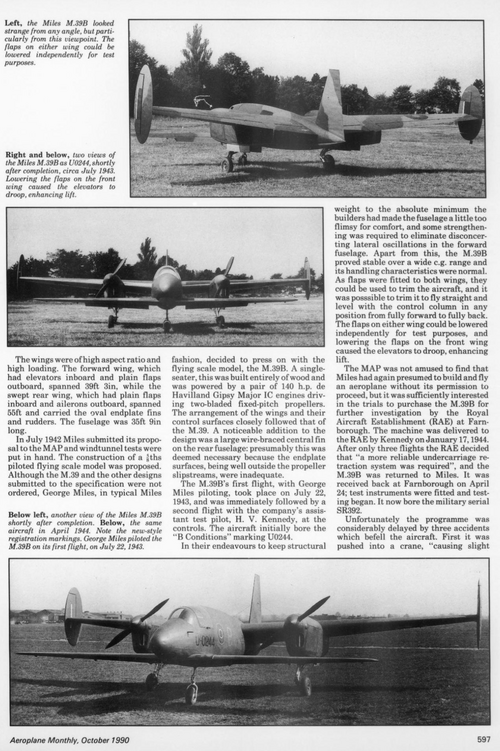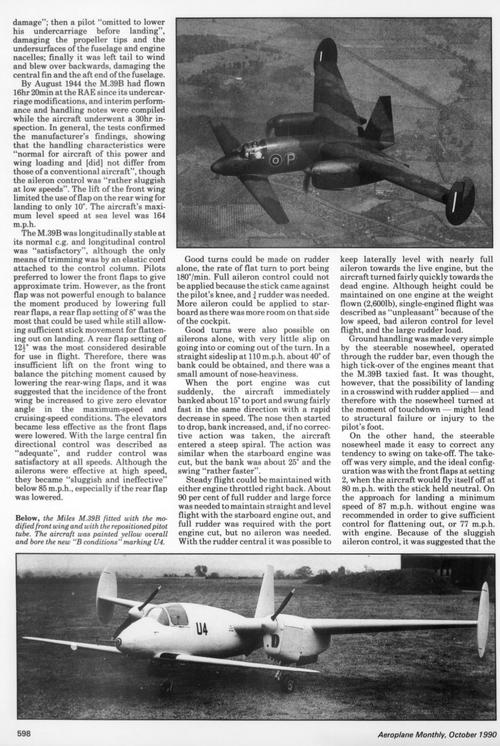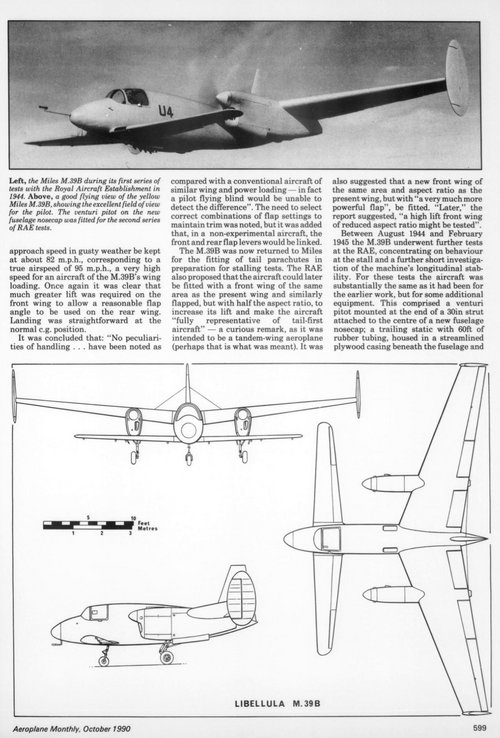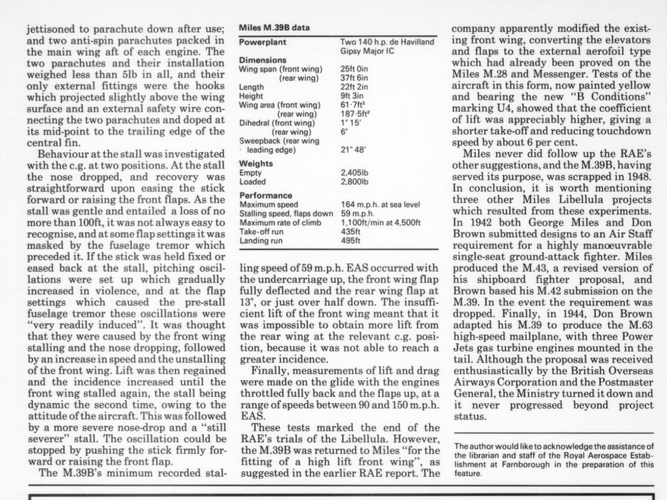W
Wingknut
Guest
Thanks very much, folks – all those points about pressurisation and fatigue (etc.) strike me as convincing.
Besides pressurisation worries and bird-strikes on the plexiglass nose, another concern I might have is the clearance for the ventral air intake on take-off – I worry a real Miles SST would just have scooped up anything moveable on its runway.
I like the 'Napkinwaffe' point too and (although I may be biased here) I think the Miles SST makes contemporary transonics like (e.g.) the DFS 346 look a bit puny. With that said, the Miles design seems just too big a leap into the dark, especially for a company whose main expertise lay with training aircraft.
Cheers, 'Wingknut'.
Besides pressurisation worries and bird-strikes on the plexiglass nose, another concern I might have is the clearance for the ventral air intake on take-off – I worry a real Miles SST would just have scooped up anything moveable on its runway.
I like the 'Napkinwaffe' point too and (although I may be biased here) I think the Miles SST makes contemporary transonics like (e.g.) the DFS 346 look a bit puny. With that said, the Miles design seems just too big a leap into the dark, especially for a company whose main expertise lay with training aircraft.
Cheers, 'Wingknut'.


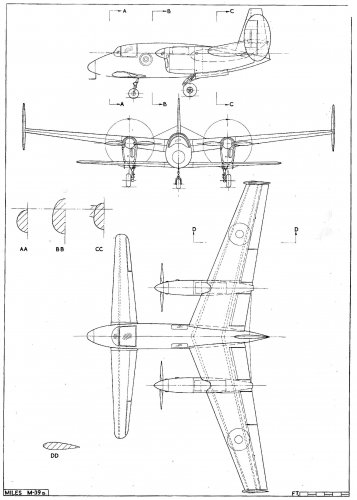
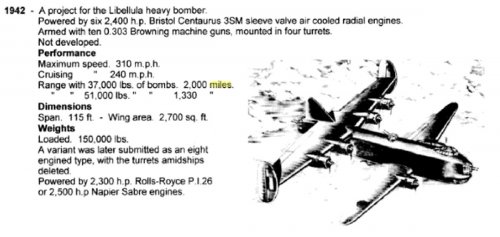
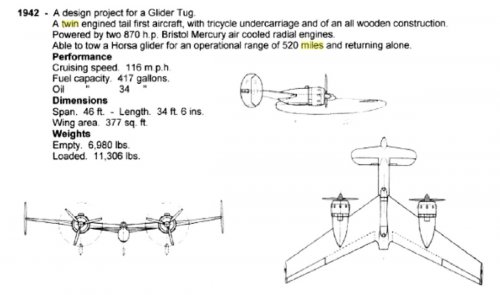
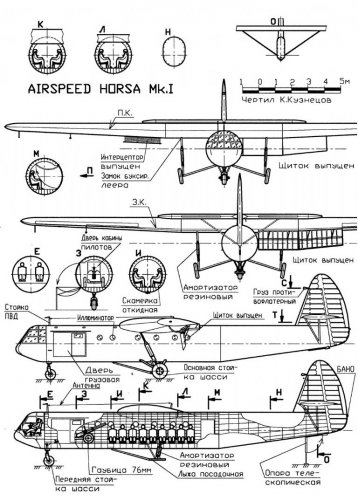
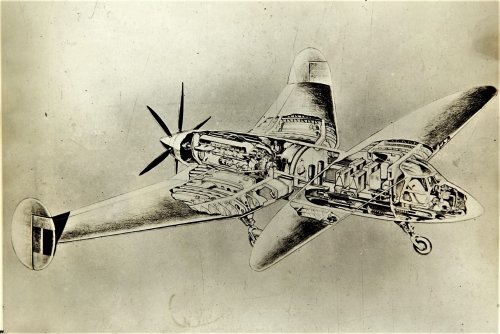
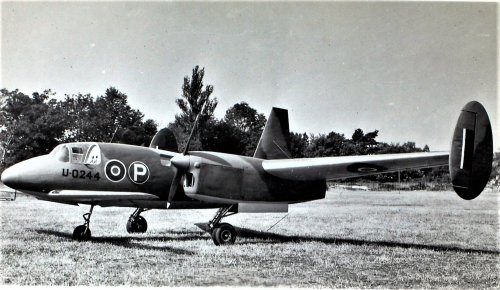
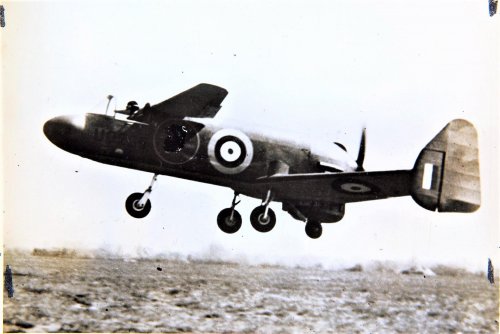
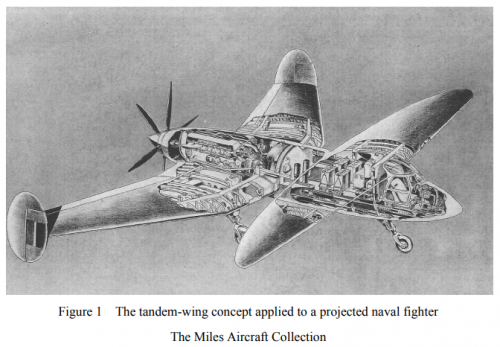
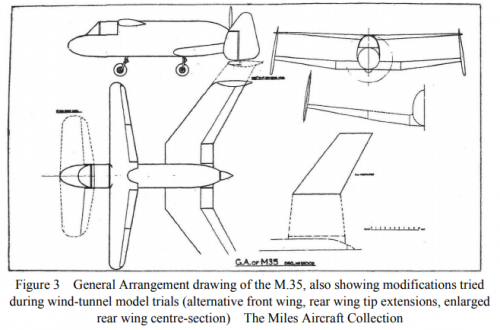
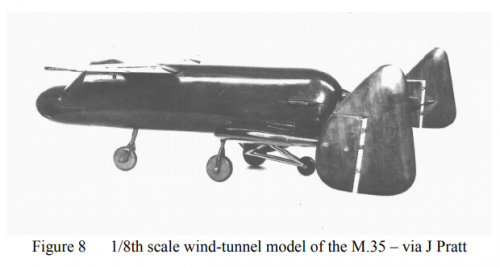
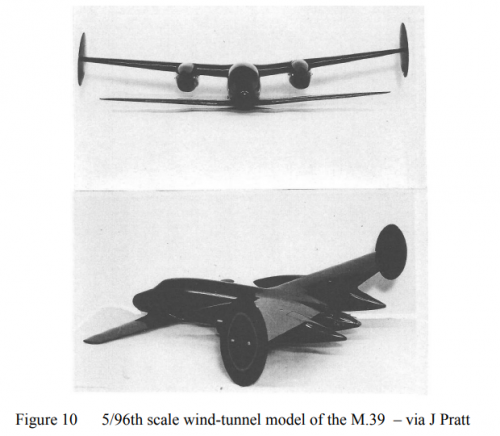
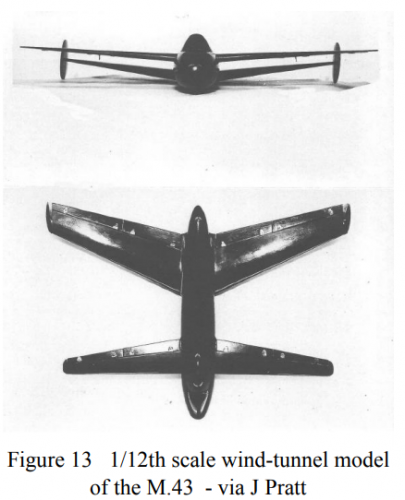
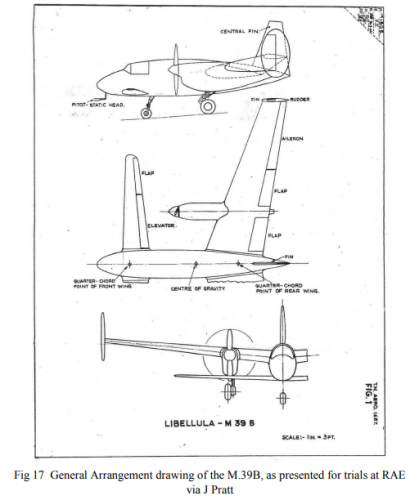
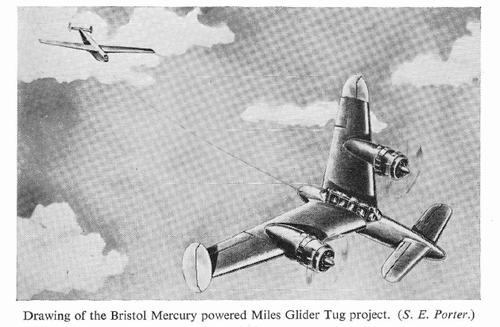
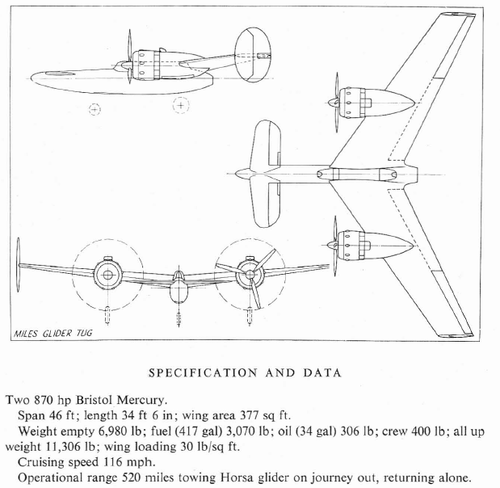
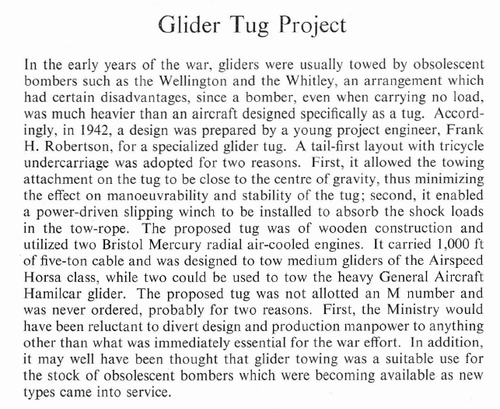
![Décollage___le_magazine_de_[...]_bpt6k97676754_5.jpeg](/data/attachments/170/170334-aaf2fe22596002fe6fb4a7c2a0132200.jpg)
